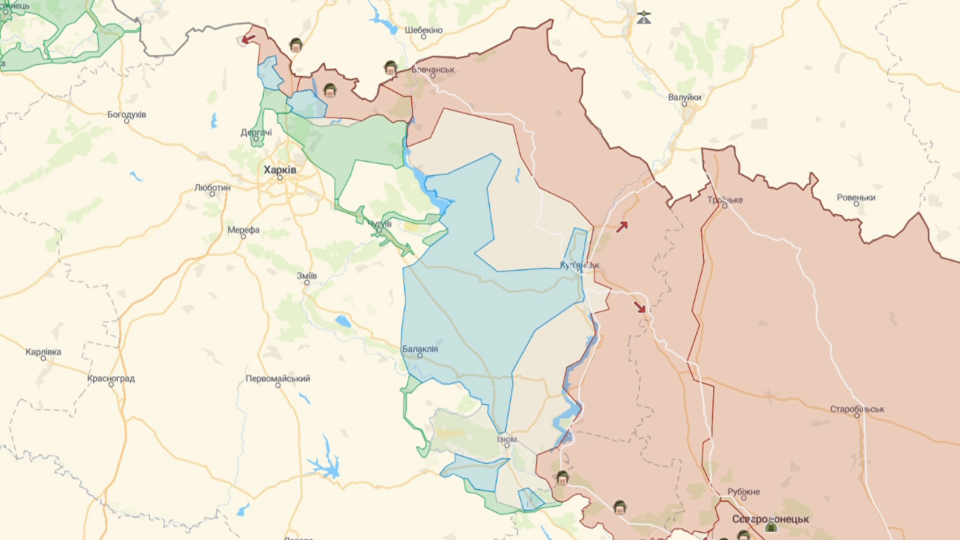
Ukrainian Armed Forces defeat Russian troops in Kharkiv region with speed and maneuvers - Serhiy Zgurets column
The Ukrainian army is taking the initiative and conducting a well-planned and implemented offensive at the frontline in Kharkiv region
A well-planned and implemented offensive of the Armed Forces of Ukraine in the Kharkiv region
Despite all the difficulties, this week gave us all hope for a faster approach to our victory. The Armed Forces of Ukraine conduct a large-scale counteroffensive in the Kharkiv region, make efforts to liberate the South, and hold defensive lines around Donetsk. The Commander-in-Chief announced that over 3,000 square kilometers of territory had been liberated and the liberation of the occupied territories continues. We can call the actions in the Kharkiv region such an ideal storm, which was well planned and implemented by our military. Every day - new conquered frontiers: September 8 - Balaklia and the district around it, September 9 - a rush from Balaklia to Shevchenko. September 10 - from Shevchenkiv to Kupyansk, from Volokhovyi Yar to Izyum. Now the liberation of settlements of Kupyansk and Izyum districts of Kharkiv region continues.

Western media's assessment of the Ukrainian offensive
These events excited not only Ukrainians. Here are some abstracts from influential foreign publications. The Washington Post wrote about "the stunning defeat of Russian troops in the Kharkiv region." The publication notes that a new momentum has appeared in the war and Ukrainian troops "have the potential to change the course of the war." The New York Times mentions the liberation of Izyum: "The city was an important intermediate station for the Russians to replenish and strengthen their troops involved in the battles in Eastern Ukraine." The publication determines that during August, the Ukrainian military leadership announced an offensive in the South before striking in the Northeast, using the technique of disorienting the enemy. NYT calls the speed of the advance of the Armed Forces in the Kharkiv region stunning.
The reaction of the Russian occupiers to the actions of the Ukrainian Armed Forces
The enemy first tried to throw reserves into the battle to restrain the offensive and threw them to the defense of Izyum. Our command again defeated the enemy and the further offensive of our units had such a result that it deprived the enemy of the meaning and opportunity to defend Raisin. The enemy left a large amount of equipment and ammunition there.
What was the reaction of the main Russians? The Ministry of Defense of Russia, after several days of mute shock, finally falsely declared that this was not a retreat from the Kharkiv region, but "a three-day operation to collapse and organize the transfer of the Izyum-Balakliya group of troops to the territory of Donetsk People’s Republic".
Now Russians leave the territory of the Kharkiv region and move to the east to the Oskil river, where they will probably try to deploy a new line of defense along the water obstacles.
Success factors of the Ukrainian Armed Forces of the Kharkiv region
Parts of the Western Military District of the Russian Federation captured Balaklia on March 2, from it to the direction of Slovyansk, Russian troops traveled about 20 km in 6 months. We returned it in 4 days and went deep into the enemy's defense for more than 50 km. Now we are talking about the liberated Kupyansk and Izyum.
What is important and new in this operation? First, we conducted this offensive without an advantage in manpower and heavy armor, but we clearly demonstrated the superiority of our military thinking over the enemy. Our planners for this operation used an approach where we did not attack the enemy's defense line head-on. We had combined maneuvers of units, coverage of enemy forces and high-precision strikes on the depth of the enemy's defenses. All this was done on the basis of quality intelligence and stable reliable communication between our advancing units. This is an extremely important factor. This resembles an echo of the American assault tactics, when all the enemy's ability to resist in the depth of his defenses is first destroyed, and then offensive actions are conducted at the optimal moment.
We had them only at the first stage, when we broke through the defense line, and then it turned out that the enemy's second defense line was not saturated and there were no reserves. As for our high-precision strikes, they were launched not at company and platoon strongholds, but at observation points, command posts, communication nodes, bases with fuel and ammunition.
It had meaning and result. When the offensive began, the enemy at the strongholds had no opportunity for sustained resistance and had no interaction with the higher command, and the defense began to collapse. Also, this operation began unexpectedly for the enemy - there were rotations of the enemy and the enemy put secondary and less prepared combat units on the first line. The third factor - the enemy did not expect an attack in this place, could not determine the direction of our maneuvers in view of the features of the terrain - differences in height and vegetation contributed to our maneuver. The enemy was also not prepared that this would be such a deep operation with broad objectives. And our fighters actively advanced deep into the enemy's defenses, not giving the enemy the opportunity to recover and understand what is happening around them.
Motivated Ukrainian units actually defeated Russians with speed and maneuver. At the same time, our most combat-capable units or units with a drive for victory operated on this part of the front. These are the 92nd and 14th Mechanized Divisions, the 80th aeromobile, the 25th airborne, and the 115th Territorial Defense Forces Divisions. I will also note the role of the General Staff in planning and the commander of the Ground Forces, General Sirskyi, in the management of our forces, which during the operation really deserve the highest marks in terms of professionalism and preparation for it. We can say that at the beginning of September, the Ukrainian army took the initiative on this part of the front.
- News














































